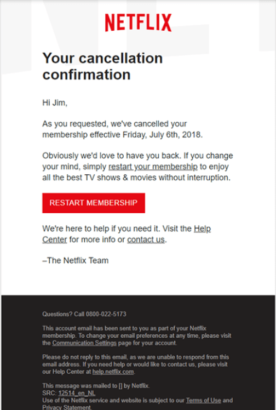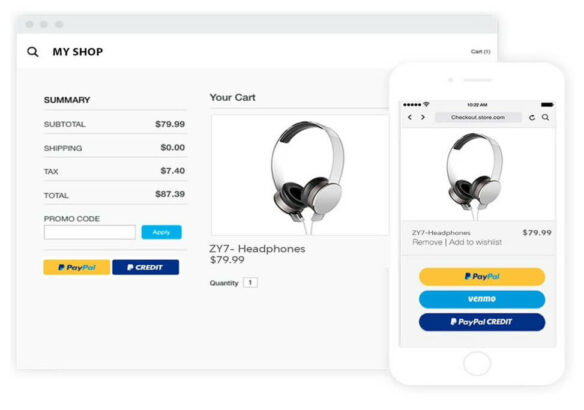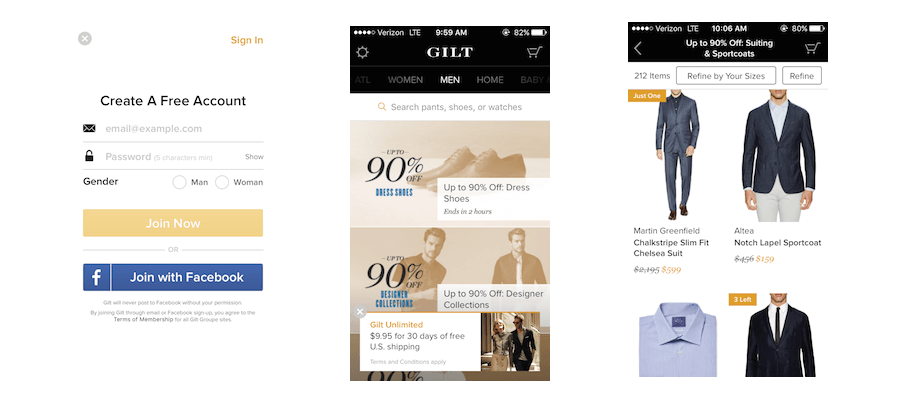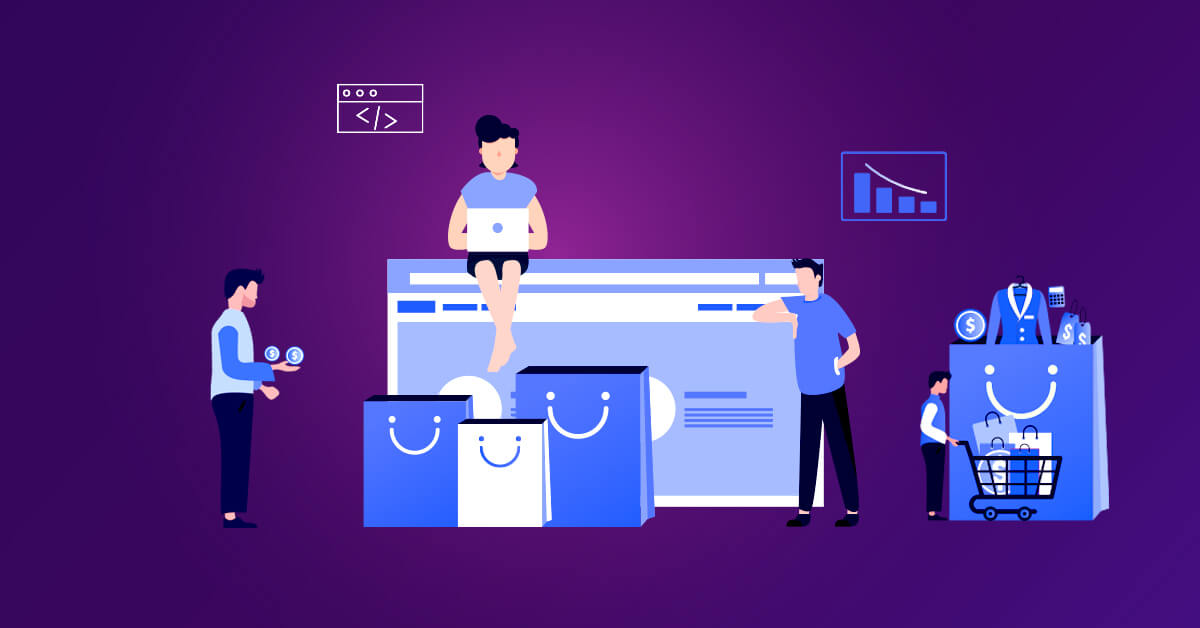So the e-commerce industry continues to flourish across vertical markets and geographies as more and more businesses flock to the online channel. Setting up an e-commerce store is relatively easy in this digital age, but expanding web operations and generating revenue – not so much.
With online retailers present in abundance and consumers being pickier than ever, fostering customer loyalty is an issue and a rather challenging one. The cut-throat competition in the e-commerce spectrum is hard to crack, and that’s pretty obvious.
Based on numbers from the US Census Bureau, Online retail sales are expected to continue to grow by almost 20% between 2018 and 2022 in the US, reaching almost 380 million in 2022. This is excellent news but listing the businesses which will generate the maximum revenue by that period is unpredictable.
Securing a solid spot in the e-commerce industry for years to come is suddenly the need of the hour. Don’t worry – we at Wigzo have got you covered. Implementing the marketing strategies mentioned below may offer new opportunities to you to grow your online business:
Best Tips to Boost E-commerce Profitability In 2021
1. Design a spectacular website
Did you know it takes about 50 milliseconds for visitors to decide if they like a website or not? So if your website is dull, boring, or too traditional, your website’s bounce rate will be high.
Visual communication is essential as 80% of customers remember what they see, and a staggering 10% of them never forget what they read on the website. To improve your site navigation, pay attention to how easy or difficult it is to browse through your online store.
Make sure the presentation of your products and services piques their interest. Just check out the “New Arrivals” section of the H&M website, and you’ll know what we mean:

Lastly, your ‘About Us page must be equally mind-blowing. According to Marketing Sherpa, 7% of visitors on the homepage click to see the ‘About Us’ page. Those who see this webpage are 33% more likely to convert into viable buyers. In a nutshell, your ‘About Us’ page should be able to spark curiosity!
2. Your email marketing should look good
As you know, digital marketers have finally taken notice of how important email newsletters are in molding a brand’s tone and image. Most e-commerce stores have also finally realized how easily customers could be captured with the help of a simple newsletter sign-up popup.

With email expected to reach 90.9% of those who are online, it’s a given that email marketing is not going anywhere! Try offering your customers a free incentive (or a free guide – it depends on what you sell) and see how positively they’d react.
Moreover, 2021 is the year of 1:1 marketing. This year is dedicated to reinventing that “personal touch” absent from many business interactions. 1:1 marketing is also known as “segment of one.”
To foster greater customer loyalty and better returns on marketing investment, it is crucial to increase the personalization count of the email content – not just on a segment level but also on an individual basis.
3. Create a compelling push strategy
Push notifications were originally used in Blackberry devices to notify users that they had new emails. But as you can see – they have gone beyond that and evolved into a smart marketing tactic. A Responsys survey states that push notifications deliver 50% higher open rates than emails.
Push notifications on mobile and web are being used as a default feature to communicate with users daily. Here’s what they seem to do effectively:
- Reduce cart abandonment rates by pushing out messages that create a sense of urgency.
- Generate location-based messages to prompt the customers to check out the store in their vicinity.
- Encourage wishlist to help the brands better understand what their customers are exactly looking for and then delivering just that. Just like Myntra does it!
- Keep the subscribers informed with the latest information because that’s what your job is!

4. Lure the consumers with multiple perks
Online shoppers love free shipping! The lack of this option is the #1 reason why visitors abandon a purchase. 93% of online buyers will buy more products if free shipping is offered. With this simple service, you are guaranteed to decrease cart abandonment rates and increase the size of the orders.
Secondly, discounts and coupons are also powerful marketing tools. An Oneupweb consumer study clearly states that 95.5% of consumers love low prices on online stores. Therefore, make sure info on any ongoing sale is flashed boldly across the website and, of course, emails.
Macys.com saw an impressive rise from 12% to 15% in their online sales in 3 months in 2018 because of the decreased personalization in messages on emails and websites.
5. Provide smarter payment options
Being the final step before a customer completes his journey, it sometimes becomes necessary to make or break the deal. A customer has gone through several other stages, awareness, consideration, and then has decided to purchase a product from your brand. But if the experience right before completing the ordeal turns out to be a hassle and isn’t smooth going, consider a potential customer lost.

A study by Baymard Institute reveals that about 70% of shoppers tend to abandon their carts. So even after researching, thoroughly going through the product(s), and adding them to their cart, why don’t most shoppers complete the payment process?
The report by the Baymard Institute further states that 28% of cart abandonment takes place due to complicated checkout processes. So, this year focus on making this particular experience seamless for your customers if you want to stay ahead. Offer them a smoother checkout process and easy payment options that ensure quicker conversation with our brand.
Further in the study, about 13% of the customers were stated to abandon their purchases for lack of local payment options. So, if you have plans on expanding your audience reach further across the globe, you will have to come up with better payment solutions for shoppers in other countries.
6. Enhanced Security does wonder
While working to make customers’ purchase journey smooth and efficient, keeping your website security in mind is also essential. The only thing that appears to be worse than a horrifyingly complicated checkout process can compromise customers’ financial information to the hackers. It is not just your duty to keep your customers’ data safe but also a security breach scandal isn’t something a brand can afford.
Make sure that you only get professional security for your website and servers. This might cost you a tad bit more than plug-ins and other software, but you can treat this as a long-term investment that will only help businesses with smoother functions.
Professional and dedicated security services are the ones to rely on as these are most effective in countering data losses and preventing hacks. Plus, authentic security systems can help your site better in case of a malfunction.
7. Create an omnichannel experience
With the increased use of mobile phones and tablets, there is a need for cross-device marketing. Unfortunately, 69% of companies don’t have a cross-device communication plan, which is why “engagement” is such a big deal for marketers.
Therefore, in both B2B and B2C spectrum, aligning content and design across all platforms to maintain consistency is a must. The value proposition that you put forward in the market is your brand message. After all, it is a promise that is made to potential customers. You should make sure it is delivered clearly.

Apart from this, you should offer insightful information to your customers regularly. Showcase yourself as the authority in your industry. Integrate robust data and analytics into your omnichannel marketing strategy.
Use machine learning to update data as the market evolves. Companies such as Wigzo offer great tools to achieve this. It will help you to create more relevant content for your audience.
8. Give apt product recommendations
A study by Barilliance indicated that up to 31% of the revenue of the 300 e-commerce sites surveyed was generated solely from personalized product recommendations during the last quarter of 2014. The worldwide average of the same was 12%!
A Forrester study states that product recommendations are responsible for an average of 1–30% of e-commerce store revenues! For instance, Amazon’s product recommendation system is no joke! If you are a first-time visitor on the website, you will find generic recommendations such as “What Other Customers Are Looking At Right Now” or any “Best Seller.”

If you revisit it, you will find personalized recommendations on the homepage that are based on your previous visits’ browsing history. But don’t overwhelm your customers or divert them from completing the conversion process.
Instead, make sure your recommendations are relevant and are helpful to them in making an informed decision. But how can you ensure this? With the use of Wigzo! Wigzo’s machine learning technology helps you understand these customers’ changing needs and optimize your marketing strategies accordingly.
When you know what a customer is looking for, the recommendations you make become more relevant.
9. Use the subscription-based model
There’s nothing new about this model. We have been subscribing to magazines, newspapers, fitness clubs, mobile companies for a long time. So e-commerce businesses can leverage their effectiveness to acquire more conversions.
The graph below states that firms working with an average transaction value below $25 have customer lifetime values 1.78X higher for subscriptions than for non-subscription customers. Since CLTV is one such metric that is difficult to predict, a subscription-based model will surely sort out many issues.
This model can provide a much clearer picture of the value of each customer, so you exactly know what type of customer is worth spending more to acquire as opposed to another. Typically, a subscription-based model offers significantly fewer subscription levels, making the shipping costs less to bear and delivery time a lot more manageable.
It is easy to identify potential buyers and study the existing ones. You can conveniently create a niche market for your products which is great for any business!
10. Leverage mobile marketing
“In particular, more than two-thirds (68%) of e-commerce transactions happen on mobile today.”

Think about mobile usage in search engines, for example. According to Statista, mobile devices accounted for 56% of organic search engine visits in Q1 2020 alone. This makes mobile SEO and online marketing essential for small businesses, especially e-tailers, to grow well online.
Furthermore, responding to email is another activity people are far more likely to carry out on a smartphone.
E.g., Campaign Monitor concluded that 68% of email campaigns now get opened on a mobile device. That is a boost of over 40% since 2015, a 60% jump from the mark in 2010.
To make mobile marketing an ROI-positive game, you can;
- Leverage SMS marketing
- Leverage digital marketing for localization
- Use mobile push notifications
- Optimize your business for voice search
- Benefit from WhatsApp marketing
The possibilities are endless!
Your turn…
It’s all about shopping or consuming information convenient and fun for the modern consumer. With these tips, we are sure your business will find its groove and boost its profitability faster than ever.













